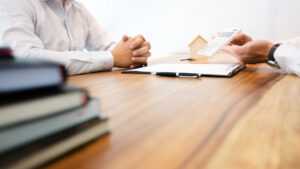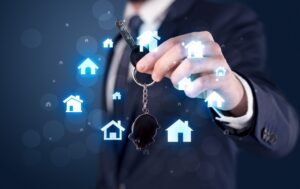Over 65% of people own their homes in the US, and many people choose to buy instead of build. Building your own house is an exciting adventure, but it’s important to know how much it’s going to cost before you start. Otherwise, you could see yourself going over budget very quickly.
The cost of building a house depends on many things, like the size of the house, the materials you use, and even the current state of the economy. Learn more about what to consider when you’re creating a construction budget below.
House Size and Design
The size of your house is one of the most significant factors that affect the cost of construction. It’s quite simple: the larger the house, the more materials and labor will be required. If you’re building a bigger house, you’ll need more bricks, more wood, more windows, more flooring, and so on.
Construction materials make up a considerable portion of your budget, and the more you need, the higher the cost will be. Additionally, a larger house usually takes more time to build, which means more hours of labor for the construction crew. These combined factors contribute to the increased expense of building a house.
The Influence of Design
House design also has a big impact on the cost to build a home. Intricate arches or customized windows are unique features that could lead to larger build expenses. That’s because these special features need extra care and attention from construction workers.
Unique designs and finishes may also require specialized materials or techniques. Expert assistance may be a necessity to install these features the way you want them. The result is a larger chunk taken from your construction budget.
Location, Location, Location
Building materials and labor costs change depending on the site of your new home construction. If you’re building in a city, construction materials might be more expensive because they’re in high demand. Skilled laborers may also charge more if they work in an area with a higher cost of living.
Alternatively, building in a rural area might reduce your build costs. Smaller communities might have local resources and recommendations to keep your costs down. Labor rates might also be less expensive.
However, keep in mind that building in a rural area can rack up other forms of expenses. For example, you may have to buy a car to travel.
Other Location Factors
If you’re building in an area with poor ground quality, you can expect to pay more for labor. Experts may need to be called in to advise on how best to build a house in these areas. Plus, construction workers may have to arrange specific transport for their equipment to get to these kinds of sites.
Or, maybe you fancy a little home by the sea? Desirable locations can also result in increased construction costs. Because so many people want to build in places like these, laborers are more in demand resulting in higher costs.
Materials
The materials you pick for your house have a substantial impact on both the appearance and the cost of your construction project. Let’s delve into the world of materials and how your choices can influence your budget.
Quality vs. Cost
Materials come in a wide range of quality and price points. While luxurious materials like marble countertops and hardwood floors can make your home feel lavish, they often come with a higher price tag. On the other hand, more budget-friendly options like laminate or tile can provide a similar look without straining your finances.
Finding the right balance between quality and budget is crucial. It’s possible to achieve a beautiful and durable home without opting for the most expensive materials across the board. Consider where splurging on high-end materials makes the most sense and where you can save by choosing cost-effective alternatives.
Local Availability
Another aspect to consider is the availability of materials in your area. Some materials might be more expensive if they need to be shipped from a distant location. Choosing locally sourced materials can sometimes help you cut down on transportation costs.
Long-Term Cost Considerations
It’s important to remember that the upfront cost of materials isn’t the only factor to consider. Some materials might require more maintenance or might not stand the test of time as well as others.
While an initial investment in premium materials might be higher, they could save you money in the long run by reducing the need for repairs or replacements.
Labor Costs
Building a house requires a team of skilled workers, and their expertise comes with a cost. Highly specialized trades like electricians, plumbers, and masons often charge more for their services due to their expertise and the precision required for their work.
Labor costs can also be influenced by the demand for construction in your area. If the construction industry is booming, labor costs might be higher as workers have more job opportunities to choose from. Conversely, during slower periods, you might find more competitive labor rates.
Efficiency and Time
The efficiency of your construction crew can also impact labor costs. A skilled and well-organized team can complete tasks more quickly, potentially reducing labor expenses. On the other hand, inefficiencies or mistakes could extend the timeline and drive up costs.
Of course, one way or another, you should never cheap out on labor costs. Experienced laborers will not only help build you the house of your dreams. They’ll also have the know-how to spot and stop any problems or issues before they become a real concern.
Foundation and Structure
When constructing a single-family home, the foundation and structure are like the building’s bones – they provide the support and stability necessary for a safe and durable home. Just as you want your new home’s internal life to be strong and secure, you’ll want the same for its physical foundation.
The Importance of a Strong Foundation
Imagine a house as a tree; the foundation is its roots. A solid foundation ensures that your house is stable and can withstand various elements.
Different types of foundations, such as concrete slabs, crawl spaces, or basements, offer varying levels of strength and complexity. While a concrete slab might be more budget-friendly, a basement could provide extra space but also add to the cost.
Depending on your build location, different foundation features are important. For example, if you’re building in an area that’s prone to extreme weather, you’ll want to consider strengthening your foundation just that little bit more. If you ever choose to sell your home, a strong foundation will make it more valuable and appealing.
Choosing the Right Structure
The structure of your house, including walls and roofing, also affects the cost. The shape and complexity of the design can impact the amount of labor and materials required. If you’re opting for unique features like vaulted ceilings or elaborate roof designs, these could increase costs due to the specialized work involved.
Interior and Exterior Finishes
Interior and exterior finishes are where your house truly becomes a home. These elements include things like paint, flooring, cabinetry, siding, and roofing materials.
These finishes contribute to the aesthetic and functional aspects of your house. They might also make your house easier to sell. However, they can influence your budget significantly.
Balancing Aesthetics and Budget
While it’s tempting to go all out on luxurious finishes, it’s essential to align your choices with your budget. High-end flooring, for instance, might be stunning, but there could be more budget-friendly alternatives that still offer durability and a pleasing appearance.
Research and comparison shopping can help you make informed decisions about where to invest in premium finishes and where to opt for more economical options.
Additional Costs
When planning your budget, don’t overlook the often-hidden costs that can arise during construction. These include permits, inspections, and utility connections.
These expenses are essential for ensuring your house is built legally and safely. While they might not be as exciting as choosing countertops, they are critical aspects of the construction process.
Planning for Unforeseen Expenses
Building a house is a dynamic process, and unexpected challenges can arise. It’s wise to set aside a contingency fund in your budget to account for unforeseen expenses. This way, you’re better prepared to handle unexpected issues without derailing your project or stretching your finances too thin.
How to Estimate Your Construction Budget
To get a rough idea of how much it might cost to build your house, you can use an online construction cost estimator. Just enter details like the size of the house, the location, and the type of materials you want to use. Keep in mind that these estimates are just starting points, and the actual cost can vary.
Build the Perfect Construction Budget
Building a house is a big financial commitment, so it’s important to plan carefully and create a realistic construction budget. Remember that unexpected expenses can come up, so it’s a good idea to have a little extra money set aside just in case.
Getting quotes from different contractors and researching materials can also help you make informed decisions about your construction budget. With the right planning, you can turn your dream home into a reality without breaking the bank.
For more help and expert guidance on selling a home, contact We Buy Houses Memphis.







